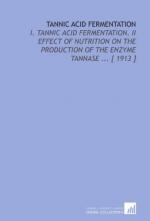|
This section contains 943 words (approx. 4 pages at 300 words per page) |

|
Key Facts
Other Names:
Penta-(m-digalloyl)-glucose; tannin; gallotannin
Formula:
C76H52O46
Elements:
Carbon, hydrogen, oxygen
Compound Type:
Organic
State:
Solid
Molecular Weight:
1701.20 g/mol
Melting Point:
Begins to decompose at 210°C (410°F)
Boiling Point:
Not applicable
Solubility:
Soluble in water, ethyl alcohol, and acetone
Overview
Tannic acid (TAN-ik AS-id) is a pale yellow amorphous powder, shiny scales, or spongy material that gradually darkens when exposed to air. It is odorless but has a strong, bitter taste. It is a derivative of the simple sugar glucose (C6H12O6) in which five hydroxyl groups (-OH) have been replaced by large complex side chains known as digalloyl groups. Tannic acid occurs naturally in the bark of hemlock, chestnut, mangrove, and oak trees; in sumac plants; and in plant galls, the hard swellings that develop on trees infested with insect parasites. The name tannic acid comes from...
|
This section contains 943 words (approx. 4 pages at 300 words per page) |

|


